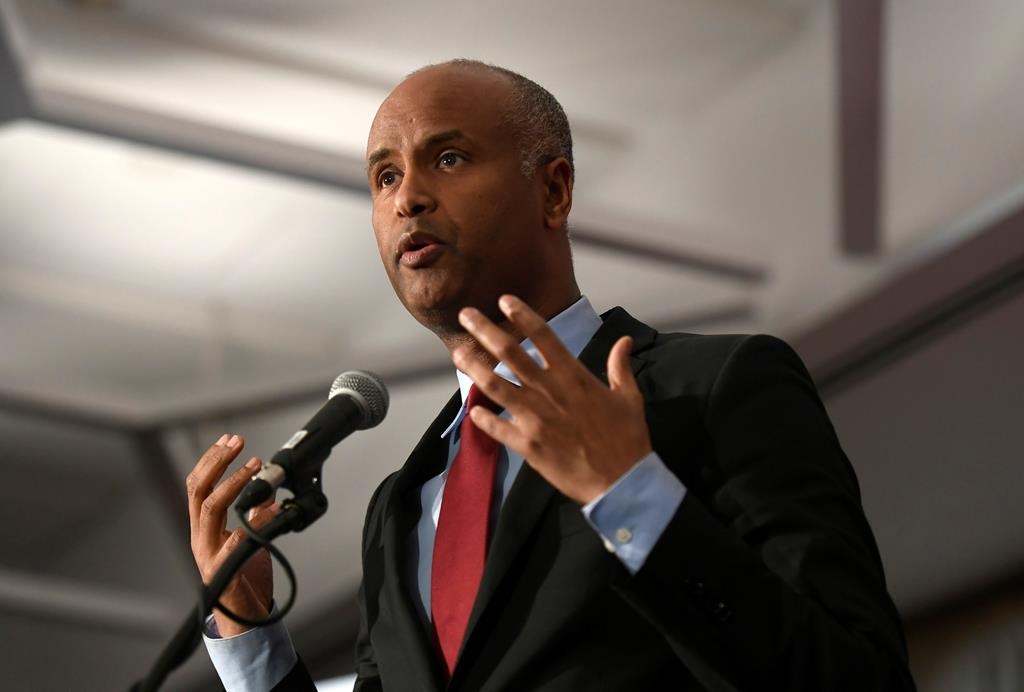Canada’s minister in charge of federal efforts to expand child care says funding to create 250,000 before- and after-school spaces will be on top of $7.5 billion in already planned spending.

Ahmed Hussen says the upcoming federal budget will outline how the funding will roll out, but adds he wants the spaces to come available as soon as possible.
The Liberals promised in last fall’s election campaign to create a quarter of a million spaces for children under age 10 outside school hours at a cost of $535 million annually.
The money was promised for the fiscal year that starts in April, but it can’t flow directly to provinces until they sign renewed funding agreements with Ottawa.
The first round of agreements had the provinces and territories agree not to use the federal cash to displace their own planned spending.
READ MORE: Trudeau pledges $535 million yearly for child care spaces outside school hours
In an interview this week, Hussen told The Canadian Press that new money to provinces and territories will come with new funding expectations.
“We do expect provinces to step up as well,” he said.
“It’s too early to say how that’s going to work out because each negotiation will be unique.”

What the money buys and which parents are supported will be tailored to the needs of provinces and territories, Hussen said. Alberta, for instance, has already indicated it is interested in directing money to help child care needs in rural and remote communities in that province.
The new deals, Hussen said, would be for three years — longer than the average lifespan of most minority governments in Canada.
READ MORE: What women cared most about in the election, and how the parties stacked up
“I don’t want to just renew for the sake of renewing for one year,” Hussen said. “I’d rather us get down to business and renew for three years with as many provinces and territories as possible.”
He said he delivered that message to his provincial and territorial counterparts at a meeting last week, where the ministers discussed whether to focus the funding to spaces that would help families from marginalized populations and parents who work non-traditional hours, as well as the campaign commitment for before- and after-school spaces.
FACT CHECK: Trudeau released child care record with inaccuracies, half-truths
“I’m pretty eager to get the agreements signed so we can move. The budget will highlight the funding behind the 250,000, but I want it to be rolled out as soon as possible,” Hussen said.
“I know that there’s many families who are looking forward and very excited about our vision for providing every child in Canada an affordable and accessible daycare, so I’m eager, but it’s a partnership.”

Getting the money approved in the budget, especially with a tightening fiscal framework, will require the support of enough opposition MPs.
That is an issue the Liberals didn’t have in 2017, when the 10-year child care spending breezed through the House of Commons on the back of a majority government.
Hussen said he doesn’t see the opposition being a major hurdle this time around, suggesting that parties were discussing child care and support for families during the fall election campaign.
Funding that flowed to provinces and territories through expiring three-year agreements has created 38,000 of a planned 40,000 child care spaces by this year.
Annual spending is supposed to increase to $870 million by 2026 under current plans.
Hussen suggested that additional subsidized spaces may be created above the 40,000.
- Budget 2024 failed to spark ‘political reboot’ for Liberals, polling suggests
- Train goes up in flames while rolling through London, Ont. Here’s what we know
- Peel police chief met Sri Lankan officer a court says ‘participated’ in torture
- Wrong remains sent to ‘exhausted’ Canadian family after death on Cuba vacation



Comments